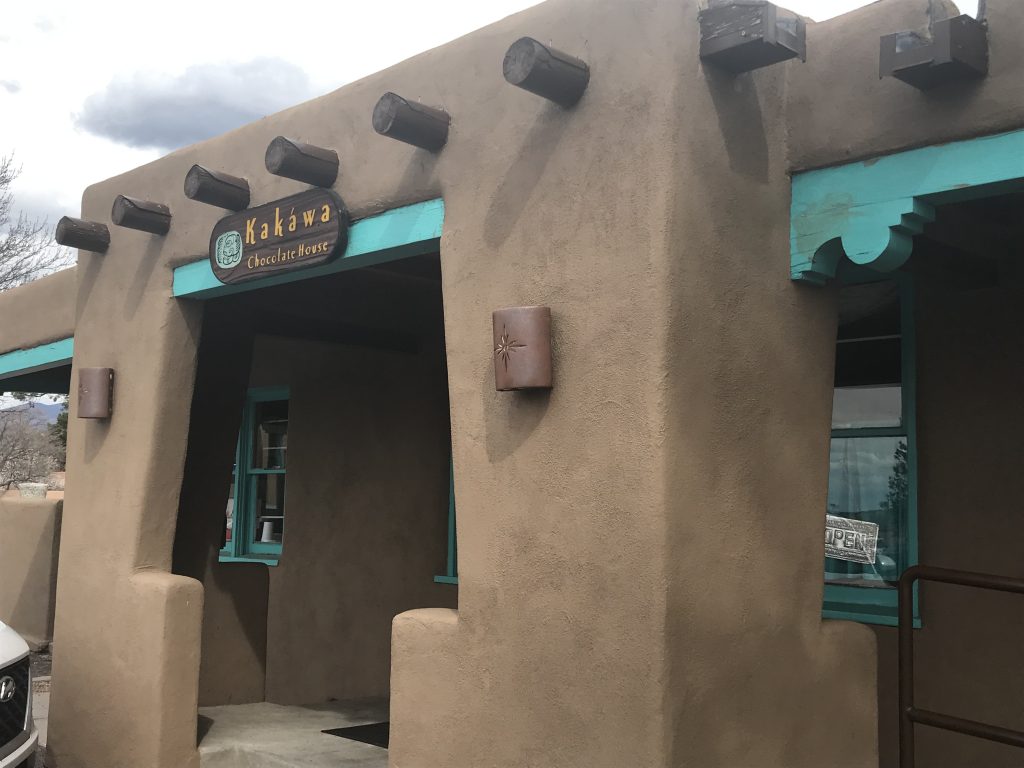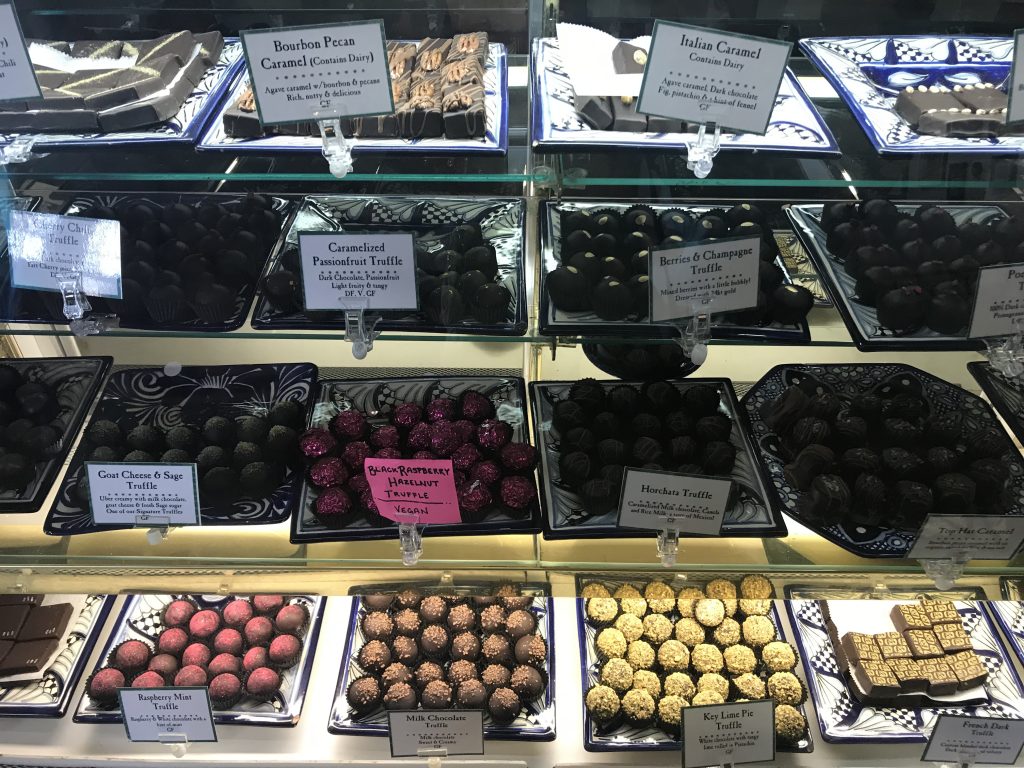At the expense of a day in Santa Fe, we spent one of our two allotted days skiing at Taos. Although I wouldn’t trade the opportunity to snow ski on a perfect April sunny day in uncrowded conditions (rare), we didn’t get to explore Santa Fe as much as I hoped.
We arrived at the Sante Fe Plaza, the heart of the 400-year-old city around dusk. Not only is it the oldest US capital city it’s also the highest elevation US capital city at 7,000 feet (surpassing Denver by over 1,000 feet). No wonder visitors flock here during the hot summer months.
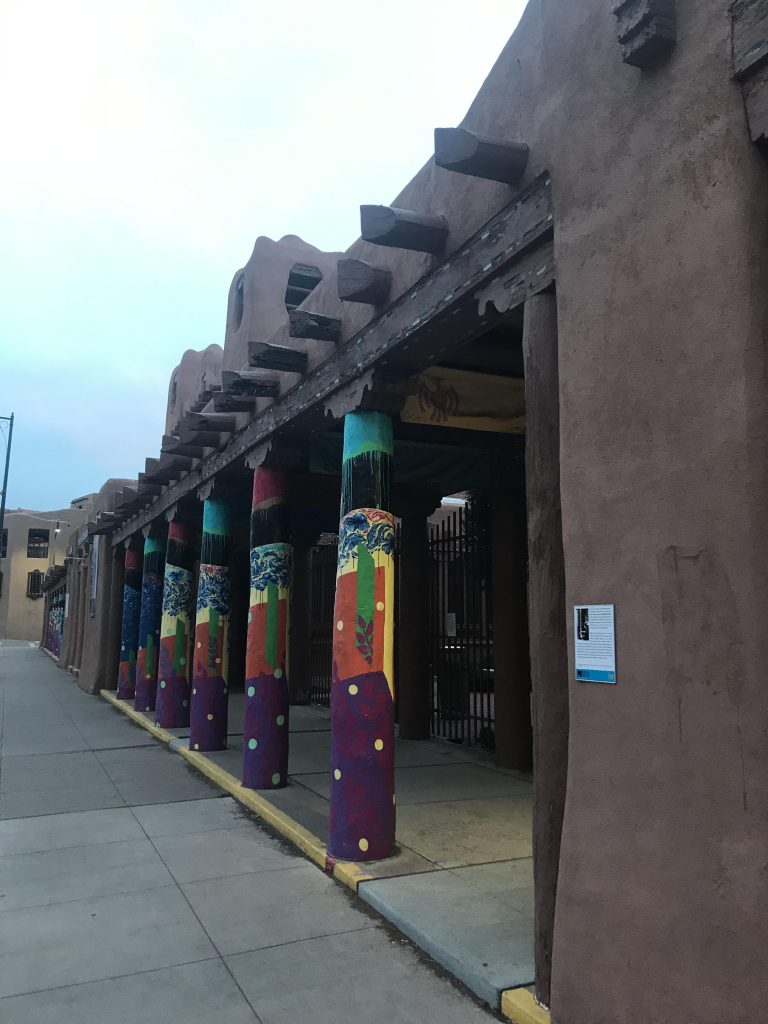
Although the plaza was quiet, we walked around the historic district taking in the adobe architecture. Soon, we came to a park and the Cathedral Basilica of St. Francis Assisi.
The Romanesque Revival style cathedral felt more European than American Southwest. Although the site of a church since its founding. Santa Fe’s first bishop, Father Baptist Lamy, replaced the 1714 structure with the new cathedral in the 1870s honoring his French roots.

A statue of Bishop Lamy flanks the front of the cathedral. However, the statue of a woman in Native American attire caught my attention. She is St. Kateri Tekakwitha, the first Native American to become a saint.
Bandelier National Monument
The next morning we did a morning side trip to Bandelier National Monument just 45 miles away. It turned out to be one of my favorites and you can click here to read about our experience. Because we left early in the morning, we were back in Santa Fe by noon to do more sightseeing.
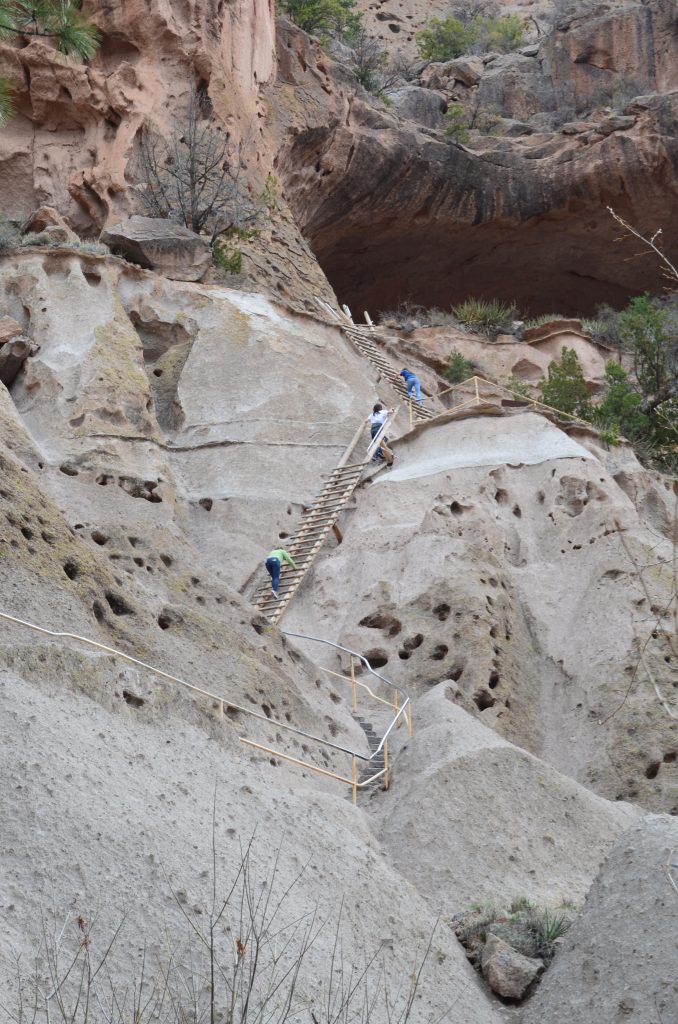
Loretto Chapel
For a small admission fee, we stepped inside Loretto Chapel to see their “miraculous staircase.” The person taking admission explained there are several mysteries surrounding it. Who built it? How did they build it? Where did they find the wood?
Constructed in 1878, there was no staircase to the upstairs choir loft in the small chapel. Expert carpenters told the nuns they’d have to remove several pews to build one. The Sisters of Loretto prayed to St. Joseph (patron saint of carpenters) for nine days. According to legend, a man showed up with only a few tools and built the staircase in three months. Upon completion, he left without payment and anyone knowing his name.
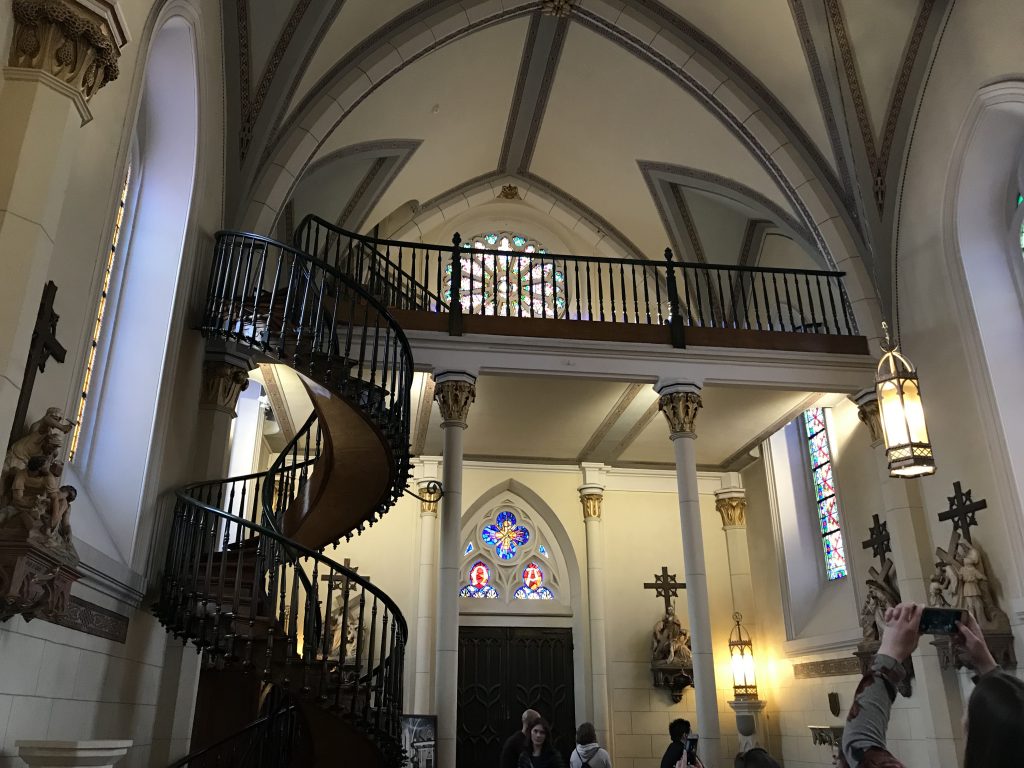
Today architects still can’t figure out how the staircase stands with two complete spirals and no center pole for support. Additionally, nails and glue weren’t used, only square wooden pegs. The staircase features rare wood that is not found anywhere in the Southwest.
There are no explanations except one. The Sisters believe it St. Joseph himself who built it. A true miracle.
Walking Around the Plaza
Directly across from the plaza is the block-long Palace of the Governors. In 1610, the Spanish explorers built the one-story pueblo-style building to use as the seat of government. Throughout its history as the oldest public building in the US, Native Americans occupied it during the Pueblo Revolt and the United States used it for 40 years as New Mexico’s first state capital building. Today it is part of the New Mexico History Museum.

Outside, the palace’s covered walkway provides a shady spot for Native Americans to sell hand-made items. Controlled by the Native American Vendor’s Program since the late 1930s, the artisans must be a member of a New Mexico tribe and are selected each day by lottery.
Look up any review site and The Shed comes up as one of Santa Fe Plaza’s top restaurants. Expect a wait as the word is out about this popular restaurant featuring New Mexican cuisine. During the wait, we enjoyed people watching in the outdoor courtyard while sipping on some of the best margaritas I’ve ever had.
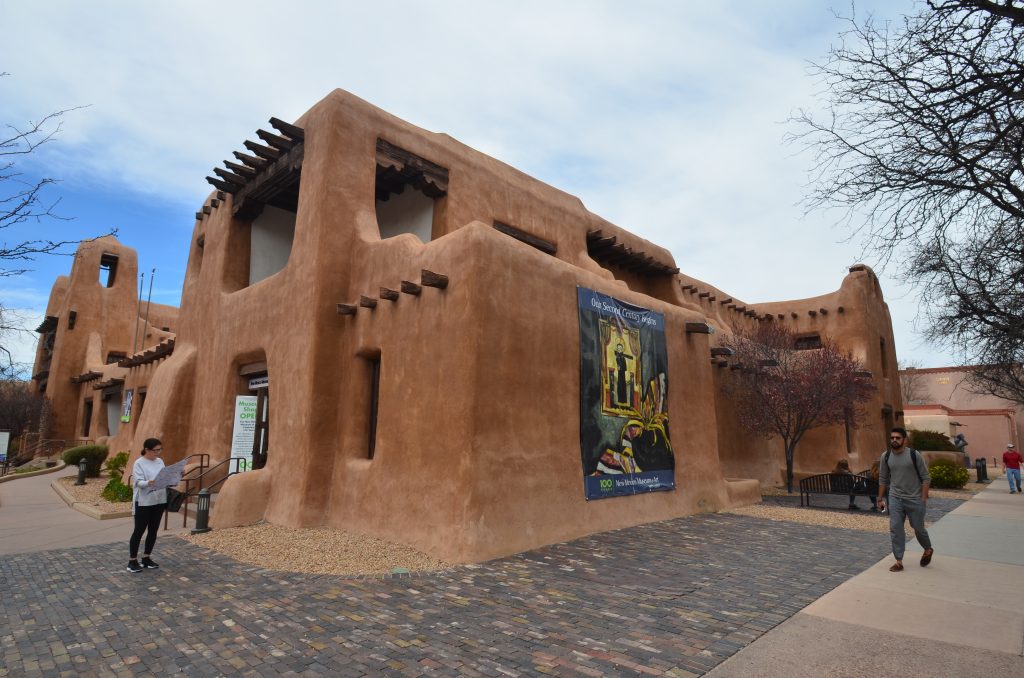
Many museums are within walking distance of the historic plaza. The IAIA Museum of Contemporary Native Arts (MoCNA) features over 7,500 works of art by Native Americans produced since 1962. The Georgia O’Keefe Museum highlights the artist who resided in New Mexico for almost 40 years. The New Mexico Museum of Art, in existence over 100 years, houses European and American art in a Pueblo Spanish Revival-style building.
New Mexico Museum of History
Instead of art museums, we chose to visit the New Mexico Museum of History. Admission also includes touring the inside of the Palace of the Governors. However, the palace was closed due to a major renovation project.
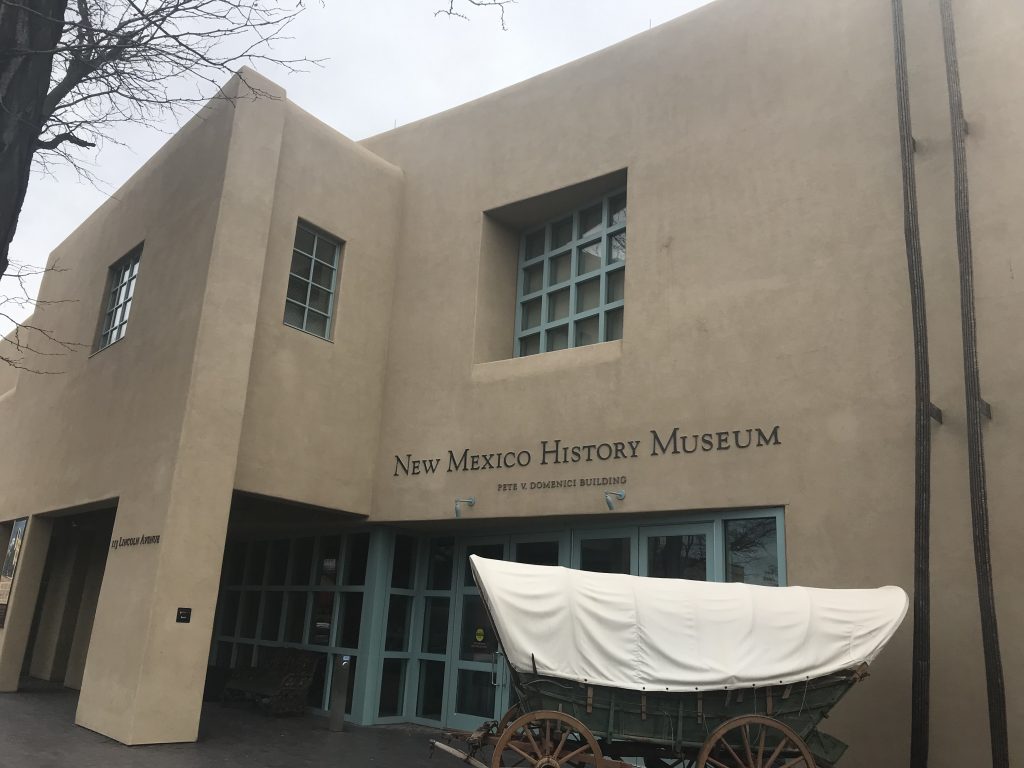
On the top level of the museum, we saw the special exhibit, “Atomic Histories: Remembering New Mexico’s Nuclear Past.” As part of the Manhattan Project during WWII, top scientists researched and developed the atom bomb in nearby Los Alamos and tested it in Alamogordo. The exhibit told us the history of the area and the project, as well as living in a post-nuclear world. Unfortunately, they did not allow any photography of the exhibit.
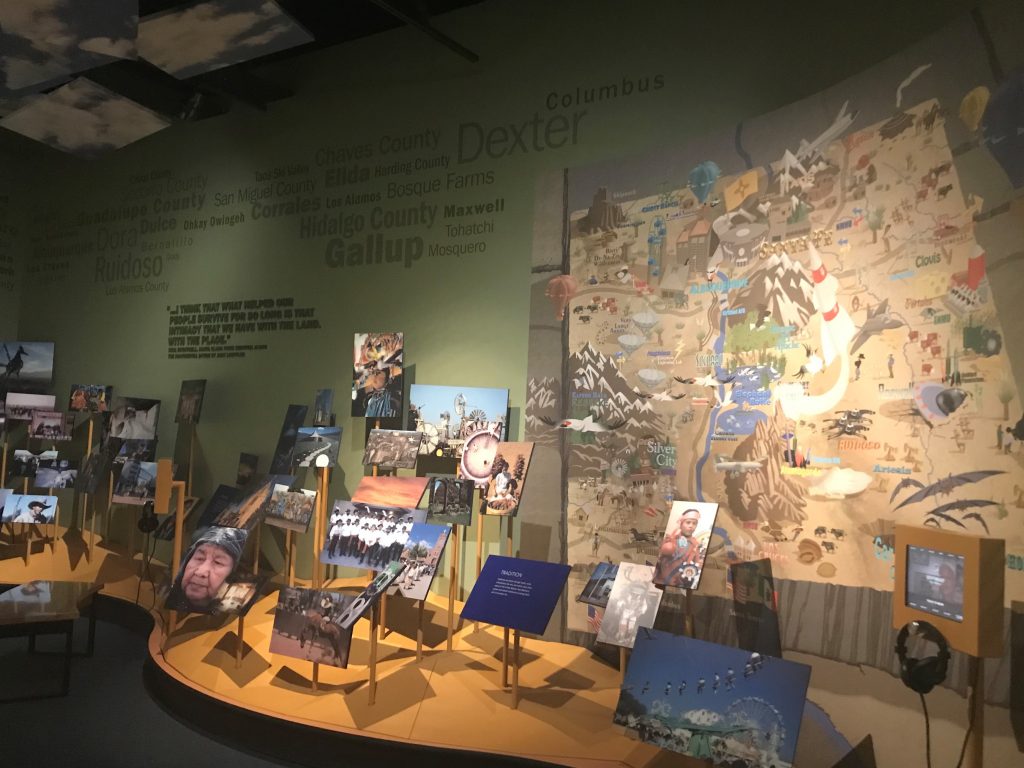
Working our way downstairs, we enjoyed the exhibit on the Fred Harvey Company which brought quality lodging and dining at places along the western railroads. We especially enjoyed it since the family-run company developed most of the South Rim of the Grand Canyon and we had eaten at the Harvey House Restaurant in Bright Angel Lodge a few days before.
Although the rest of the museum offered more history on the state, we experienced information overload and decided to call it a day.
Kakawa Chocolate House
It was time for a snack and as we drove away from the Plaza, we stopped at Kakawa Chocolate House. I didn’t know there were so many choices of hot chocolate! These drinking elixirs range from American chocolate with 70% cacao to Zapateca with 100% cacao. Some are flavored with chili and other herbs.
Reportedly hot chocolate began in Mexico over 2,000 years ago and was important in religious ceremonies. Later, the medicinal properties of cacao made it popular among Native Americans in the Southwest. Because dark chocolate is less sweet, we still had room to try a cookie and a chocolate truffle.
Now it was time to drive to Albuquerque to spend the night and catch our 6 am flight home the next day.

